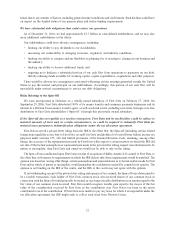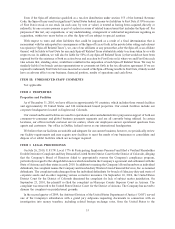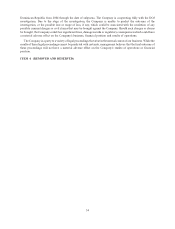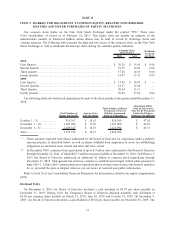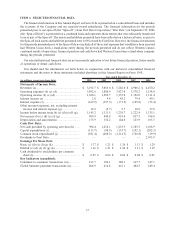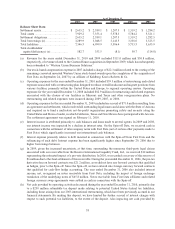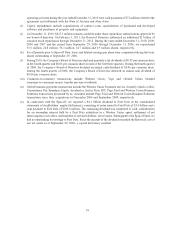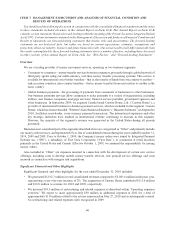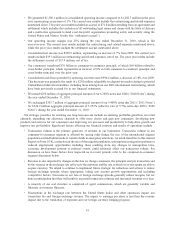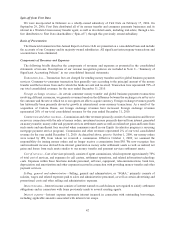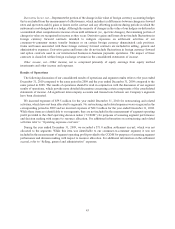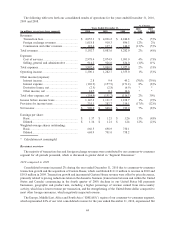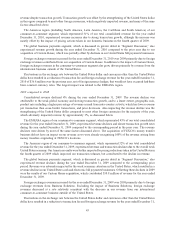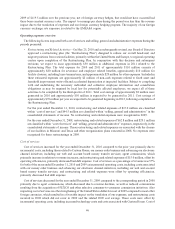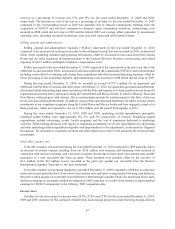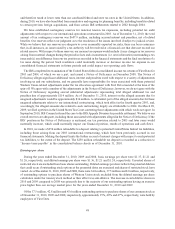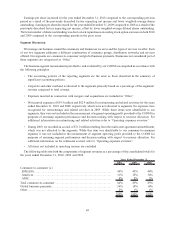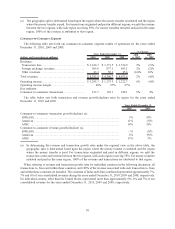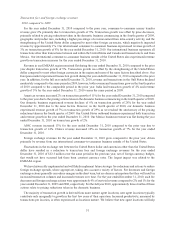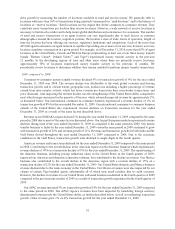Western Union 2010 Annual Report Download - page 44
Download and view the complete annual report
Please find page 44 of the 2010 Western Union annual report below. You can navigate through the pages in the report by either clicking on the pages listed below, or by using the keyword search tool below to find specific information within the annual report.Spin-off from First Data
We were incorporated in Delaware as a wholly-owned subsidiary of First Data on February 17, 2006. On
September 29, 2006, First Data distributed all of its money transfer and consumer payments businesses and its
interest in a Western Union money transfer agent, as well as its related assets, including real estate, through a tax-
free distribution to First Data shareholders (“Spin-off ”) through this previously owned subsidiary.
Basis of Presentation
The financial statements in this Annual Report on Form 10-K are presented on a consolidated basis and include
the accounts of our Company and its majority-owned subsidiaries. All significant intercompany transactions and
accounts have been eliminated.
Components of Revenues and Expenses
The following briefly describes the components of revenues and expenses as presented in the consolidated
statements of income. Descriptions of our revenue recognition policies are included in Note 2—“Summary of
Significant Accounting Policies” in our consolidated financial statements.
Transaction fees—Transaction fees are charged for sending money transfers and for global business payments
services. Consumer-to-consumer transaction fees generally vary according to the principal amount of the money
transfer and the locations from and to which the funds are sent and received. Transaction fees represented 78% of
our total consolidated revenues for the year ended December 31, 2010.
Foreign exchange revenues—In certain consumer money transfer and global business payments transactions
involving different currencies, we generate revenues based on the difference between the exchange rate set by us to
the customer and the rate at which we or our agents are able to acquire currency. Foreign exchange revenues growth
has historically been primarily driven by growth in international cross-currency transactions. As a result of the
acquisition of Custom House, our foreign exchange revenues have increased. Foreign exchange revenues
represented 20% of our total consolidated revenues for the year ended December 31, 2010.
Commission and other revenues—Commission and other revenues primarily consist of commissions and fees we
receive in connection with the sale of money orders, investment income primarily derived from interest generated
on money transfer, money order and payment services settlement assets as well as realized net gains and losses from
such assets and enrollment fees received when consumers enroll in our Equity Accelerator program (a recurring
mortgage payment service program). Commission and other revenues represented 2% of our total consolidated
revenue for the year ended December 31, 2010. As described above, prior to October 1, 2009, our money orders
were issued by IPS, from whom we received a commission. Effective October 1, 2009, we assumed the
responsibility for issuing money orders and no longer receive a commission from IPS. We now recognize fees
and investment income derived from interest generated on money order settlement assets as well as realized net
gains and losses from such assets similar to our money transfer and payment services settlement assets.
Cost of services—Cost of services primarily consists of agent commissions, which represent approximately 70%
of total cost of services, and expenses for call centers, settlement operations, and related information technology
costs. Expenses within these functions include personnel, software, equipment, telecommunications, bank fees,
depreciation and amortization and other expenses incurred in connection with providing money transfer and other
payment services.
Selling, general and administrative—Selling, general and administrative, or “SG&A,” primarily consists of
salaries, wages and related expenses paid to sales and administrative personnel, as well as certain advertising and
promotional costs and other selling and administrative expenses.
Interest income—Interest income consists of interest earned on cash balances not required to satisfy settlement
obligations and in connection with loans previously made to several existing agents.
Interest expense—Interest expense represents interest incurred in connection with outstanding borrowings,
including applicable amounts associated with interest rate swaps.
42


